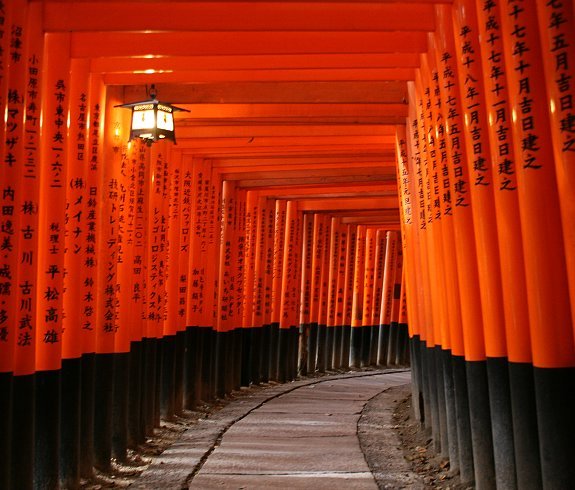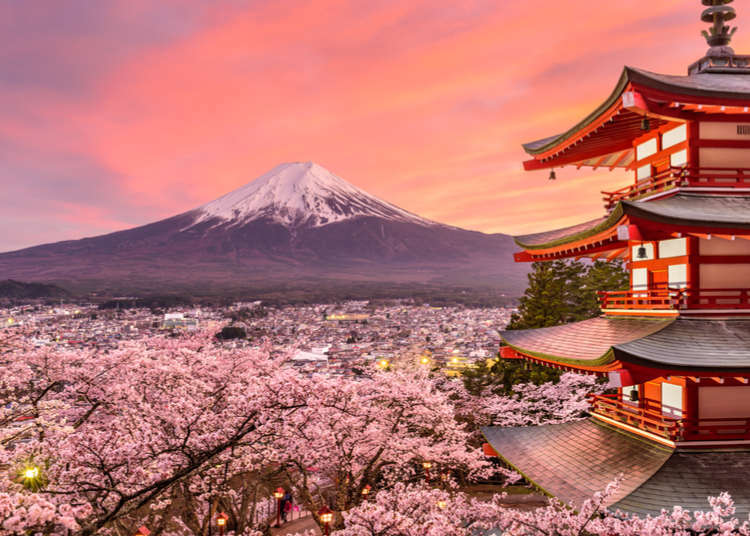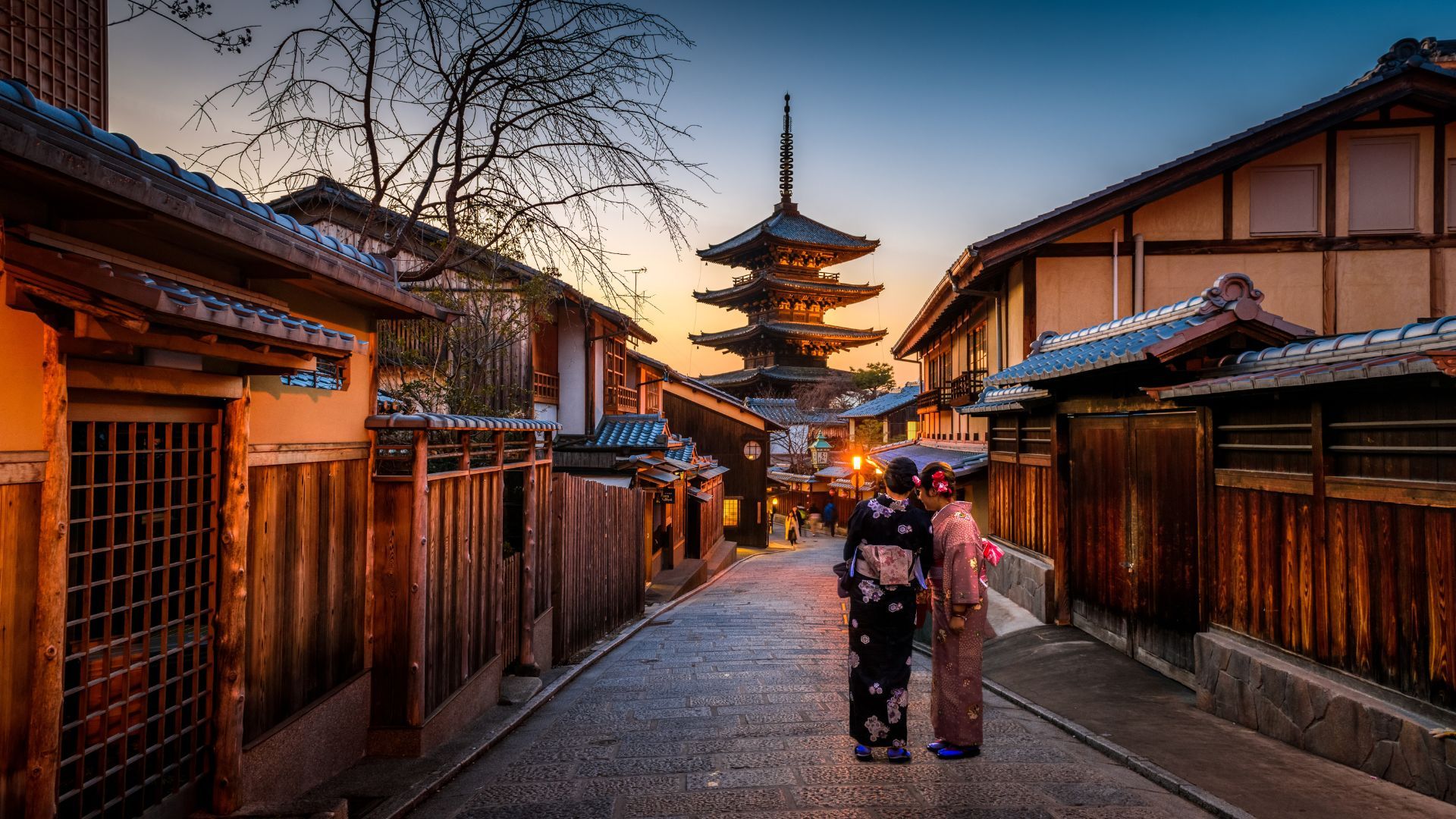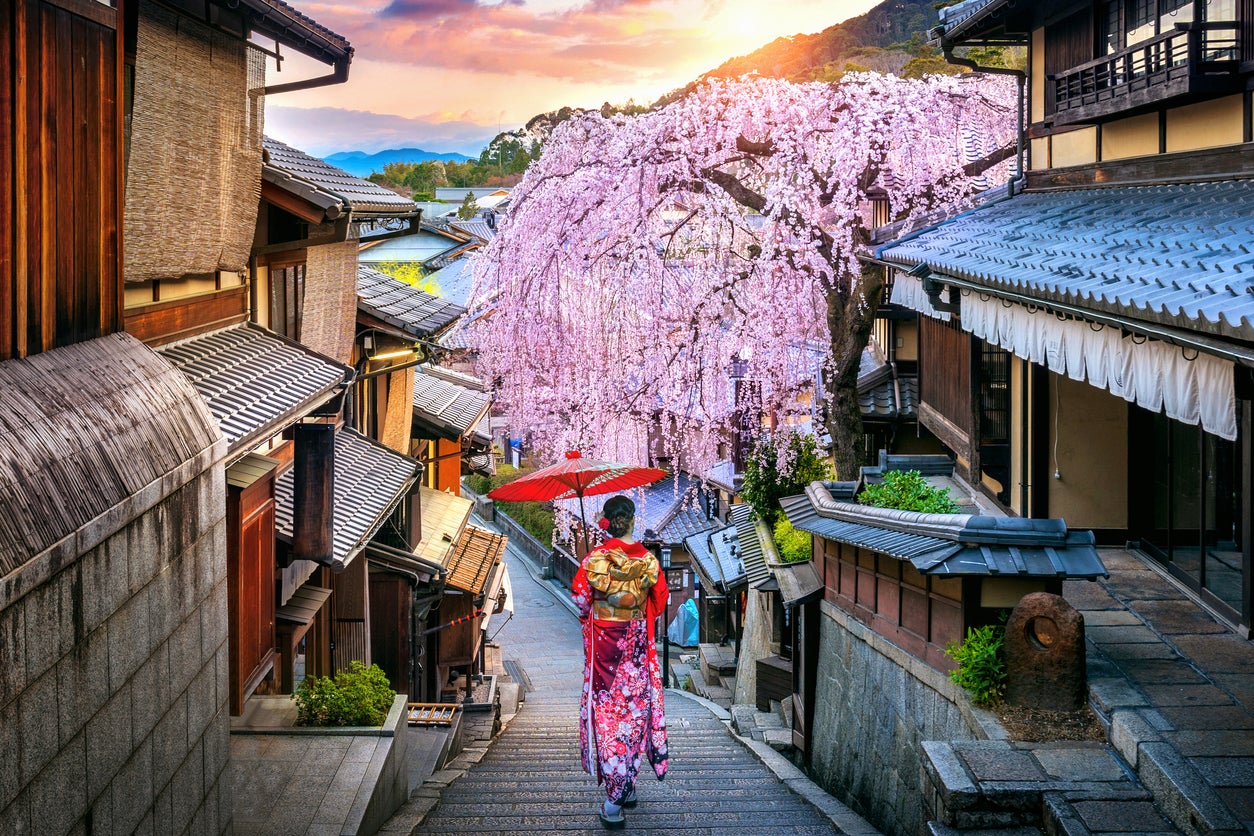Win a Free Trip to Japan!
Experience cherry blossoms and ancient temples
When planning your perfect Japan itinerary, consider the various elements that contribute to an unforgettable trip. From selecting your travel dates to choosing essential experiences, every detail matters. Japan Travel offers a vibrant mix of culture, cuisine, and stunning landscapes, making it crucial to create a balanced itinerary that captures the essence of this remarkable country. In this guide, we will explore tips to help you navigate your planning process, ensuring a seamless and enriching adventure that caters to your travel style and interests.
Choosing Your Travel Dates
Selecting the right travel dates is crucial for a memorable Japan travel experience. Various factors influence this decision, so consider the following:
-
Seasonality: Each season offers unique attractions.
- Spring (March to May): Famous for cherry blossoms.
- Summer (June to August): Enjoy vibrant festivals and lush greenery. However, it can be humid.
- Autumn (September to November): Experience breathtaking fall foliage.
- Winter (December to February): Ideal for winter sports and enchanting snow-covered landscapes.
- Public Holidays: Be mindful of Japan’s national holidays, such as Golden Week (late April to early May) and Obon (mid-August), as these can lead to crowding and higher prices.
-
Weather Considerations: Research the typical weather for your chosen dates.
- Typhoon Season: Generally between August and October.
- Temperature Fluctuations: Northern areas can be significantly colder than southern regions.
- Festivals and Events: Participating in local festivals enhances your Japan travel experience. Check for unique events during your planned dates, like the Gion Matsuri in Kyoto or the Sapporo Snow Festival.
Tip: Create a shortlist of dates that align with your interests and ensure flexibility for optimal experiences. By carefully selecting your travel dates, you set the stage for an unforgettable Japan travel adventure.

Determining Your Travel Style
When planning your Japan travel, identifying your travel style significantly impacts your itinerary. To create an unforgettable experience, consider the following travel styles:
- Cultural Explorer: If you’re keen on immersing yourself in Japan’s rich history, focus on visiting historical sites such as Kyoto’s temples and Hiroshima’s Peace Memorial Park.
- Adventure Seeker: For those who love adrenaline-pumping activities, include options like hiking in the Japanese Alps or skiing at resorts in Hokkaido.
- Relaxation Enthusiast: Prefer a leisurely pace? Consider visiting serene locations like the hot springs in Hakone or the tranquil gardens in Kanazawa.
- Food Lover: If culinary experiences excite you, prioritize cities renowned for their cuisine. Tokyo and Osaka are famous for their street food and gourmet dining options.
- Nature Enthusiast: For nature-lovers, include trips to national parks like Nikko or the scenic coastlines of Okinawa.
Comparison of Travel Styles
| Travel Style | Suggested Activities | Top Destinations |
|---|---|---|
| Cultural Explorer | Museum visits, temple tours | Kyoto, Nara |
| Adventure Seeker | Hiking, skiing | Nagano, Hokkaido |
| Relaxation Enthusiast | Spa visits, garden strolls | Hakone, Kanazawa |
| Food Lover | Cooking classes, food tours | Osaka, Tsukiji |
| Nature Enthusiast | Nature walks, wildlife tours | Nikko, Okinawa |
By determining your travel style, you can tailor your Japan travel itinerary to suit your preferences and interests, ensuring a fulfilling and memorable trip.
Top Destinations to Include
When planning your Japan travel, selecting the right destinations can make all the difference in your experience. Here’s a list of must-visit locations that showcase Japan’s rich culture, breathtaking landscapes, and vibrant city life:
-
Tokyo:
- A bustling metropolis blending tradition with modernity.
- Key attractions: Skytree, Shibuya Crossing, Asakusa Temple.
-
Kyoto:
- The heart of traditional Japan, famous for its ancient temples and stunning gardens.
- Must-sees: Fushimi Inari Shrine, Arashiyama Bamboo Grove, Kinkaku-ji.
-
Osaka:
- Known for its delectable street food and a lively nightlife scene.
- Highlights: Dotonbori district, Osaka Castle, Universal Studios Japan.
-
Hiroshima:
- A city with a powerful history and a bright message of peace.
- Visit: Hiroshima Peace Memorial Park and Miyajima Island.
-
Nara:
- Home to friendly free-roaming deer and ancient temples.
- Don’t miss: Todai-ji Temple and Nara Park.
-
Sapporo:
- Famous for its beer, skiing, and the annual Snow Festival.
- Experience: Hit the slopes or explore the historical village.
| Destination | Highlights | Best Time to Visit |
|---|---|---|
| Tokyo | Modern city, shopping, technology | Spring (March to May) & Fall (September to November) |
| Kyoto | Temples, cherry blossoms, traditional culture | Spring (March to May) |
| Osaka | Street food, entertainment | Year-round |
| Hiroshima | Peace memorial, history | Fall (September to November) |
| Nara | Nature, heritage | Spring and Fall |
| Sapporo | Snow activities, beer festival | Winter (December to February) |
Including these destinations in your Japan travel itinerary will provide a well-rounded experience of Japan’s incredible heritage and contemporary life.
Creating a Balanced Itinerary
Crafting a balanced itinerary is essential for an enjoyable Japan travel experience. A well-structured plan allows you to explore diverse attractions while avoiding burnout. Here are key elements to consider when designing your perfect itinerary:
-
Mix Urban and Rural Experiences:
- Include bustling cities like Tokyo and Osaka.
- Reserve time for serene destinations such as Kyoto’s temples or the picturesque countryside of Nara.
-
Allocate Time Wisely:
- Stay Duration: Spend 3-4 days in major cities and 2 days in smaller towns.
- Travel Breaks: Schedule free days to relax or explore spontaneously.
-
Incorporate Various Activities:
- Cultural: Visit museums and attend traditional tea ceremonies.
- Outdoor: Hike in the Japanese Alps or relax in an onsen (hot spring).
- Culinary: Try local cuisine in street markets and high-end restaurants.
-
Balance Sightseeing with Rest:
- Morning and Afternoon: Plan for sightseeing during these times.
- Evenings: Use this time to unwind at local izakayas or enjoy evening strolls.
Sample Itinerary Comparison Table
| Day | Location | Activity |
|---|---|---|
| 1 | Tokyo | Explore Asakusa and Shibuya |
| 2 | Tokyo | Visit Meiji Shrine and Akihabara |
| 3 | Kyoto | Tour Kinkaku-ji and Gion |
| 4 | Nara | Discover Nara Park |
| 5 | Osaka | Indulge in street food |
By following these guidelines, you can optimize your Japan travel experience, ensuring every moment is memorable and fulfilling.

Transportation Options Within Japan
When planning your Japan Travel itinerary, understanding the transportation options available can significantly enhance your experience. Japan boasts a sophisticated and efficient transportation network, making it easy to navigate between its vibrant cities and serene countryside. Here are the main options:
1. Trains
-
Shinkansen (Bullet Train):
- Provides rapid intercity travel.
- Covers major routes: Tokyo to Kyoto in approximately 2 hours.
-
Local Trains:
- Serve smaller towns and regions.
- More affordable but slower options.
2. Subways and City Trains
- Every major city, like Tokyo and Osaka, has extensive subway networks.
- Ideal for exploring urban areas with ease and efficiency.
3. Buses
- Long-distance buses, also known as “highway buses,” are a budget-friendly option.
- Local buses connect rural areas and are great for scenic views.
Comparison of Transport Types
| Transport Type | Speed | Cost | Convenience |
|---|---|---|---|
| Shinkansen | Very Fast (300 km/h) | $$-$$$ | Very Convenient |
| Local Trains | Moderate | $ | Convenient |
| Subways | Fast | $-$$$ | Very Convenient |
| Buses | Moderate | $-$$ | Moderate |
Tips for Transportation
- Consider getting a Japan Rail Pass for unlimited travel on JR trains.
- Download navigation apps to find the best routes and schedules.
With these options, your Japan Travel experience will be seamless and enjoyable!
Accommodations: Where to Stay
When planning your Japan Travel, choosing the right accommodations enhances your experience significantly. Japan offers a diverse range of lodging options, catering to various preferences and budgets. Here’s a brief overview of popular accommodation types:
- Hotels: Modern and convenient, hotels in Japan provide a range of services and amenities. Typically located in urban areas, they offer easy access to attractions.
- Ryokan: Experience traditional Japanese hospitality by staying in a ryokan. These inns feature tatami mat flooring, futons for sleeping, and often include communal baths known as onsen.
- Hostels: Ideal for budget travelers, hostels create a social atmosphere. They often provide private rooms and dormitory-style accommodations, along with kitchen facilities.
- Capsule Hotels: For a unique Japan Travel experience, choose a capsule hotel. These compact sleeping pods are perfect for solo travelers, offering privacy and affordability.
- Vacation Rentals: Use services like Airbnb for a home-like experience. Rentals can provide additional space and amenities, making them great for families or groups.
Price Comparison Table
| Accommodation Type | Price Range (per night) | Amenities |
|---|---|---|
| Hotels | $100 – $300 | Wi-Fi, breakfast, gym |
| Ryokan | $150 – $500 | Meals, onsen, cultural experiences |
| Hostels | $20 – $80 | Shared kitchen, social areas |
| Capsule Hotels | $30 – $100 | Wi-Fi, communal baths |
| Vacation Rentals | $70 – $300 | Kitchen, laundry |
By considering these options, you can find accommodations in Japan that suit your travel style and budget, making your Japan Travel experience unforgettable.
Must-Try Japanese Cuisine
Japan boasts a rich culinary heritage that captivates food lovers around the world. When planning your Japan travel itinerary, indulging in local dishes should be a top priority. Here’s a list of must-try Japanese cuisines that promise to enhance your cultural experience:
- Sushi and Sashimi: Fresh fish served with rice or raw slices—enjoy it in Tokyo’s famed Tsukiji Outer Market.
- Ramen: A flavorful noodle soup with various toppings. Try different regional specialties, such as Tonkotsu from Fukuoka.
- Tempura: Lightly battered and fried vegetables and seafood, best enjoyed with a dipping sauce at specialized restaurants.
- Okonomiyaki: A savory pancake filled with a variety of ingredients, popular in Osaka.
- Kaiseki: A traditional multi-course meal that offers a taste of seasonal ingredients, perfect for an immersive dining experience.
- Matcha: This powdered green tea is not only delicious but also a significant part of Japanese culture. Enjoy it in cafés across the country.
To help you plan your meals, consider the following dining styles:
| Dining Style | Description | Ideal For |
|---|---|---|
| Izakaya | Casual pub-style dining | Casual evenings with friends |
| Fine Dining | Elegant restaurants with kaiseki menus | Special occasions |
| Street Food | Quick bites from stalls and markets | On-the-go eating |
In conclusion, while exploring Japan travel, savoring local dishes enriches your journey and connects you with the country’s traditions. Don’t miss out on these culinary delights!

Cultural Experiences to Consider
When embarking on your Japan Travel adventure, immersing yourself in the rich culture of Japan transforms your journey into an unforgettable experience. Here are some unique cultural activities you should consider:
- Tea Ceremony: Participate in a traditional Japanese tea ceremony, known as "chanoyu." This ritual showcases the art of tea preparation and invites you to appreciate the significance of mindfulness and hospitality.
- Kimono Wearing: Try on a beautiful kimono for a day. Many rental shops across Japan offer this service, allowing you to stroll through historic districts like Gion in Kyoto while dressed in traditional attire.
- Sumo Wrestling: Attend a live sumo match or visit a training stable (beya) where you can observe wrestlers’ intense training sessions, steeped in ritual and tradition.
- Festivals: Plan your visit around local festivals, or “matsuri.” Whether it’s the cherry blossom festivals in spring or the vibrant Gion Matsuri in Kyoto, these events showcase local culture and traditions.
- Onsen Experience: Relax in a traditional hot spring (onsen). This unique Japanese experience offers a glimpse into local customs of relaxation and wellness.
By including these cultural experiences in your Japan Travel plans, you enrich your journey and gain deeper insights into the fascinating and diverse Japanese heritage. Choose a blend of experiences that resonate with your interests to create a balanced and rewarding itinerary.
Packing Essentials for Japan
When preparing for your Japan travel adventure, efficiently packing your essentials is crucial for a smooth journey. Here’s a list of must-have items to ensure you enjoy every moment:
Clothing
- Lightweight Layers: Japan experiences various climates; pack layers to adapt easily.
- Comfortable Shoes: Expect to walk a lot; choose supportive footwear.
Tech Gear
- Universal Adapter: Japan uses Type A and B plugs—ensure your devices stay charged.
- Portable Charger: Keep your devices powered during long exploration days.
Travel Documents
- Passport and Visa: Ensure you have the correct documentation for your stay.
- Japan Rail Pass: Consider purchasing this in advance for better rates.
Health and Safety
- Personal Medications: Bring any prescriptions you need; consult local regulations before traveling.
- Travel Insurance: Safeguard yourself against unexpected events.
Miscellaneous
- Japanese Phrasebook: Familiarize yourself with basic phrases to navigate easier.
- Reusable Water Bottle: Stay hydrated, and help the environment by reducing plastic.
Summary of Essentials:
| Item | Purpose |
|---|---|
| Lightweight Layers | Adapt to climate changes |
| Comfortable Shoes | Ensure ease while walking |
| Universal Adapter | Keep your tech charged |
| Personal Medications | Maintain health during your stay |
By packing these essentials, you’re setting yourself up for a successful Japan travel experience. Plan ahead, and enjoy the beauty and culture of Japan stress-free!
Tips for Navigating Japan as a Visitor
Navigating Japan can be a thrilling experience, especially with its efficient transport systems and vibrant cultural landscape. Here are essential tips to enhance your Japan Travel journey:
- Learn Basic Phrases: While many Japanese people understand basic English, learning a few phrases can go a long way. Simple greetings and requests will facilitate smoother interactions.
-
Use Public Transportation: Japan boasts one of the best public transport systems in the world. Consider these options:
- Trains: The Shinkansen (bullet train) connects major cities swiftly and comfortably.
- Subway: Cities like Tokyo and Osaka have extensive subway networks.
- Consider a Japan Rail Pass: If you plan to travel across various regions, the Japan Rail Pass can save you money on train fares.
- Download Helpful Apps: Use transportation apps like Google Maps or Hyperdia for easy navigation. Additionally, translation apps can help overcome language barriers.
- Stay Connected: Rent a portable Wi-Fi device or buy a local SIM card. This connection enables you to access maps and information on the go.
- Cash is King: Although credit cards are gaining popularity, many small shops and restaurants still prefer cash. Always carry some yen.
- Respect Local Etiquette: Familiarize yourself with Japanese customs, such as bowing when greeting and speaking softly on public transport.
With these tips in mind, your Japan Travel experience will be more enjoyable and rewarding. Prepare to explore this beautiful country with confidence!
Frequently Asked Questions
What are the must-see destinations in Japan for a first-time visitor?
For a first-time visitor to Japan, several must-see destinations include Tokyo, the vibrant capital rich in modern culture and tradition, Kyoto, known for its stunning temples and historic districts, and Osaka, famous for its food scene and entertainment. Additionally, Hiroshima, with its poignant Peace Memorial Park, and the natural beauty of Mount Fuji and the surrounding area should not be missed. Each of these locations offers unique experiences that capture the essence of Japanese culture.
How many days should I plan for my Japan itinerary?
The ideal duration for a Japan itinerary largely depends on your interests and the destinations you want to explore. A well-rounded trip could last anywhere from 7 to 14 days. This allows you to visit major cities like Tokyo and Kyoto, while also including day trips to nearby attractions. For a more leisurely experience that includes cultural immersion and exploration, consider planning for 10 to 14 days to truly appreciate Japan’s rich heritage, beautiful landscapes, and delightful cuisine.
What is the best time of year to visit Japan?
The best time to visit Japan typically falls during the spring (March to May) and autumn (September to November) seasons. During these times, visitors can enjoy pleasant weather, stunning cherry blossoms in the spring, and vibrant autumn foliage. Specific festivals and events also take place during these seasons, enhancing the experience. However, Japan is beautiful year-round, and each season offers a unique charm, making it worth considering what activities you want to enjoy in relation to the climate.
How do I get around Japan efficiently?
Getting around Japan efficiently can be easily accomplished through its extensive public transportation system, including trains, subways, and buses. The Japan Rail Pass is highly recommended for travelers wanting to explore multiple cities, as it offers unlimited travel on most JR trains. Additionally, Tokyo’s subway system is one of the most efficient globally, with routes covering major attractions. It’s advisable to download navigation apps or rely on signage in English at train stations to enhance your travel experience.
What should I pack for my trip to Japan?
When packing for your trip to Japan, consider the season and activities planned. Essentials include comfortable walking shoes, as you’ll be exploring various locations, and layered clothing to accommodate Japan’s variable climates. A lightweight rain jacket is useful during the spring and summer months. Additionally, a portable charger for your devices, a universal travel adapter, and any necessary toiletries are important. Don’t forget to pack a small bag or backpack for day trips, allowing you to easily carry essentials during your excursions.
